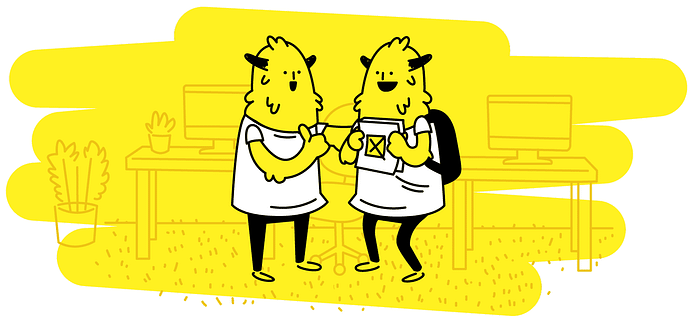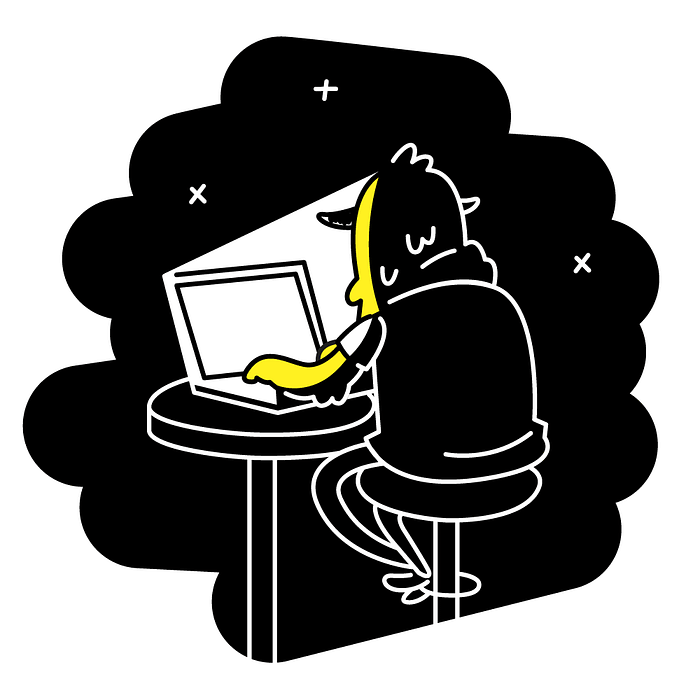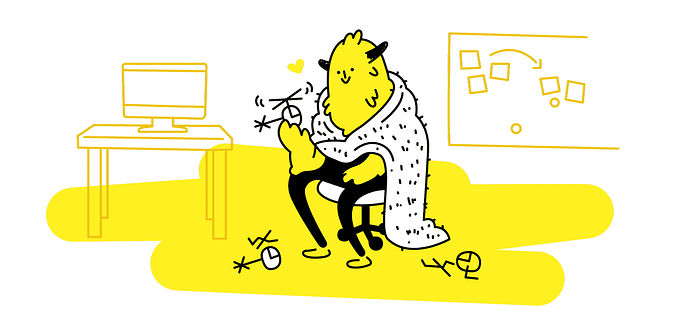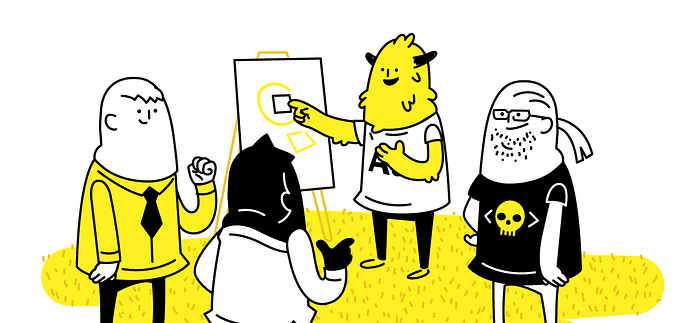The strange creatures called “Designers”
Productum Excogitatoris

Most people find the Designer to be a rather friendly looking fellow. Usually cheerful, wearing his/her stylish poplin shirts, gently distracted by creative fantasies, mumbling fondly about Apple products and always up for a good doodling. They are mostly harmless and have a tendency to live in their little world reading Medium posts and leaving humans alone. Even so, their most admirable trait is that they are ambitious and always need to create better things for other beings. A trait, that has changed the way we look at them. But how do they live? What do they do?

Designers like to hop around in small packs like a bunch of bunnies or work together with different stakeholders (carnis custodi) on what they call ‘workshops’. It wasn’t like this a little while ago. As the majority of them tends to be introverted, they are very shy and elusive by nature, evading contact with other earthly beings and usually feel more comfortable alone, polishing their creations like precious pebbles.

However, technological climate change forced designers to slurp from the same waterhole as other exotic mammals like developers, managers, data scientists or even those ungodly creatures called the AI. Working on the connected World’s products, services alone would be a daunting task if not impossible. No matter which subspecies of designers you encounter in the wild, they are probably accompanied by others in their endeavours.
Most designers are nocturnal, creativity strikes them under the moonlight (tenebris inventicus) and as such their biorhythm differs immensely from common humans. Easily distracted by all the small wonders of the World these creatures chose to survive the day and flourish at night.
It might be wise to throw a request at them during the daytime and come back for the results the day after. Some of them still can be pretty active while the Sun’s up but their peak creativity time usually starts after dawn. Keep that in mind, in the event that you need to trap one with early morning meetings!

Designers are sapiosexual. A natural consequence of them wanting to improve things. If you want to look attractive to one, you could start with complaining about untasteful architecture in your neighbourhood, the sloppy UX of your washing machine, or your last, bad shopping experience. Most of them are either charmingly geeky or artsy by nature. You could set up a bait in both fields and see how they react. Definitely, don’t say anything bad in regards to the new iPhone unless you know for sure, you aren’t facing the predominant subspecies of Apple zealots (malum admirus). Test it carefully by starting a slowly articulated sentence with “I came across this Apple gadget recently”. If you see a sudden dilation of the pupil (mupillary mydriasis), continue calmly by praising one of their latest gadgets, and try to catch up with the subjects sudden emotional blooming. Of course, designers are also attracted by aesthetics, do mention the packaging of anything you came across recently.
Designers love to build things (creo frolicus). They can also create useful tools from items in their environment that they play with. Fiddling with materials or digital styles and business problems these creatures are quite capable of giving birth to fascinating little things they call prototypes.
From tiny thimbles to massive city mockups, driven by creativity and passion they just love to do them all. A marvellous result of practicing their instinctive and learned skills and the very reason why humans still like to approach them with their daily needs.

Designers are curious. Intimidated by the new habitat around them, they’ve quickly started to learn current techniques, adapting to new standards. They like to snaffle every new tool or design method and test it in different, compelling fields, zooming in and out in the process.
Because of this curiosity and the effectiveness of their work, design itself today is widely appreciated on the C-level. Design methodologies and the positive, constructive mindset that comes with it slowly started to prove itself valuable on more strategic plains. A genetic evolution of the industry that has played out over many decades. Most importantly, an evolutional step every shy designer specimen needs to deal with today.
Though many of these diligent creatures prefer their old lifestyle, still most of them just have to adapt. It certainly requires a strong interest in the field, some maturity, and fitness. Leaving their nappies behind, designers today are happily accepted in management workshops.

As you can tell by all the media coverage on websites like Fast Company, Forbes and others, designers are quite popular today. The importance of their work in our beloved society can’t be underestimated: as industries opt-in for design-driven innovation, their skillset is needed as never before. Those particular designers who were able to open up, evolve their soft skills are now frolicking around joyfully, practicing their art on more impactful levels, and are finally a subject of public appreciation.
What the future of these currently thriving creatures brings is however unclear. Amid the merriment, they sense a new threat to their way of life with the rise of machine learning and AI. Some observers even think, most designer subspecies will be extinct in a few years.
Other, more radical voices say they should be killed right away. Perhaps, the term ‘designer’ will dissolve completely. As their instinctive purpose is to make things better (or simply challenge the status quo), their mentality is usually well received, copied. Their methods and workflows already started to influence other flocks, making design a more democratised tool and morphing the role of current designers even further.
So next time you see a designer in a dark little coffee shop snuggled up against a MacBook, working on some mockups, give them a big hug! They rarely engage in conversations on their own, buy them a tipsy cake first and then encourage them a bit! Shifting their focus from simple makers to innovators, facilitators, or even public activists is well within their reach. They have to come out to the light more regularly, adapt as many of them already did.

